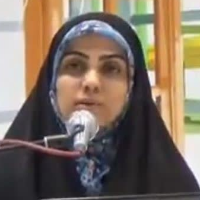Identifying and Explaining the Factors Related to the Attitude of Isfahan University Students Towards Marriage (A Study with a Mixed Method)
The purpose of this research is to explain the factors related to the attitude of students of Isfahan University towards the phenomenon of marriage, in the framework of a combined approach and using the exploratory-sequential strategy. The grounded theory method was used in the qualitative phase of the research, and the survey method was used in the quantitative phase. The results of this research show that the factors related to students' attitude towards marriage are able to explain the variance of this variable in a medium to high level. The effect coefficients have also shown the direct and significant effect of the variables of marriage imagery, subjective self-evaluation, academic atmosphere and consequentialism on students' attitude towards marriage, and the quantitative results of the research confirm the qualitative results to a large extent.
Marriage, as the foundation of family and social life, has taken on various forms and shapes in the contemporary world. In Iranian society, attitudes towards marriage and marital behavior have been influenced by the transformations of the modern world, as well as changing obstacles and challenges compared to the past. Despite its significance for society and the continuity of its structures, marriage has faced challenges in recent decades. Students are considered one of the most important social groups, primarily in the age range for marriage. The weakening inclination of students towards marriage and consequently the delay in their marriage can lead to significant cultural, social, and economic issues for the Iranian society in the future.
The present study aims to adopt a pragmatic paradigm and utilize a combined strategic, action-oriented, and result-oriented approach in this regard. By applying this combined approach, the study seeks to find practical and implementable solutions to strengthen the inclination of students towards marriage and reduce the delay in their marriage.
Research on various aspects of marriage has been extensive. However, no research has been conducted on the identification and explanation of factors related to students' attitudes towards marriage in the city of Isfahan. Sohrab Zadeh and Parnian (2016), in a qualitative study titled "Categorization of Girls' Inclination towards Marriage," identified seven categories of inclination towards marriage, including enclosed inclination and hierarchical categories influenced by postmodern discourse. These categories had characteristics such as acceptance of male dominance, women's citizenship, and the acceptance of religious and cultural obligations towards marriage. Avaresin and Nazari (2018), in their study titled "Attitudes of Islamic Azad University Tabriz Branch Students towards Marriage," using a descriptive-case study approach and an expectation measurement questionnaire, showed that realistic expectations of marriage were given higher priority, while pessimistic expectations had the lowest priority. Additionally, as age increased, the overall expectation of marriage decreased for realistic and idealistic marriage, while pessimistic expectations increased. It is worth noting that while the level of expectations from marriage was measured in this research, students' attitudes towards marriage were not investigated.
Li (2014) demonstrated in their study on young people's attitudes towards marriage that children's attitudes towards marriage were highly dependent on the parent/family environment. Those whose parents experienced conflict, divorce, and post-divorce parental conflicts expressed a negative attitude towards marriage.
The combined quantitative and qualitative approach, utilizing an exploratory-sequential strategy and developing a researcher-made questionnaire based on qualitative findings (identified concepts and categories), is one of the advantages of this research. Moreover, the inclusion of both male and female participants differentiates this study from previous ones.
The research method used a combination of quantitative and qualitative approaches. The quantitative approach involves the use of a questionnaire to collect data on students' attitudes towards marriage, while the qualitative approach includes in-depth interviews to explore the underlying factors influencing their attitudes. The participants in this research were selected from both male and female students, which allows for a comprehensive understanding of the topic. By including diverse perspectives, the study aims to capture a broader range of experiences and opinions related to marriage.
The research process consists of several steps. First, a comprehensive review of the literature was conducted to identify existing theories and findings related to students' attitudes towards marriage. This review helped to establish a theoretical framework for the study and guide
Based on the coding of the interviews, eight main themes were identified, including structured barriers, multidimensional self-evaluation, entrenched fear of failure, visualization of marriage, university environment, psychological-emotional consequences, social consequences, and economic consequences.
Following that, the questions and hypotheses for the quantitative section were formulated:Question (1): What is the attitude of students towards marriage?
Hypothesis (1): There is a difference in attitudes towards marriage between male and female students.
Hypothesis (2): Qualitative variables have an impact on students' attitudes towards marriage.
The results showed the following:a) The distribution of the research sample based on gender indicated that 8.34% of the sample were male students and 3.65% were female students.
b) The average of the variable "attitude towards marriage" and its dimensions differs significantly from the hypothetical average. Therefore, factors related to students' attitudes towards marriage, on average, have the ability to explain the variance of this variable, indicating confidence in the findings.
c) Furthermore, the values related to the estimation of the independent t-test indicate that there is a significant difference between male and female students in terms of their attitude towards marriage.
d) The independent variables of the study, in total, explain 51% of the variance in the "attitude towards marriage" variable. Considering the values related to effect size and the coefficient of determination, this value is estimated to be large. In other words, the independent variables of the study have a high ability to explain the variance of the "attitude towards marriage" variable.
-
Legal dimensions of restoring virginity in the marriage
Saleheh Khodadadi *, Azam Khoshsoorat Movvagh,
The Women and Families Cultural-Educational Journal, -
Gender Analysis of Marriage in Single Students of Isfahan Universities
Mohammad Saleh Tayeb Nia, Rahele Kardavani *
Journal of Family Psychology,


